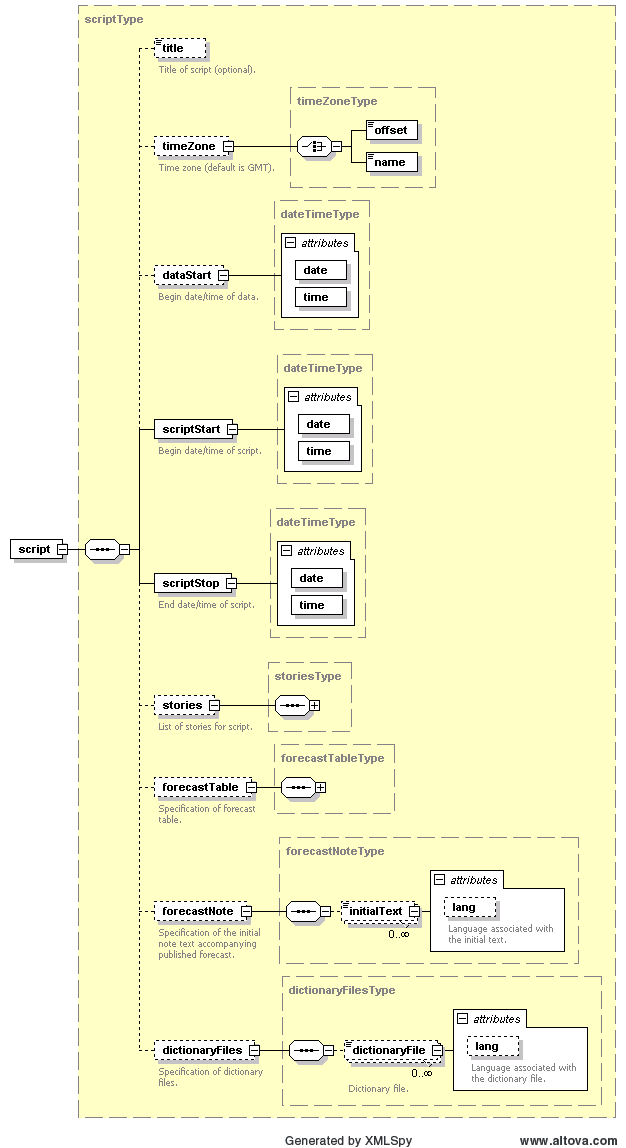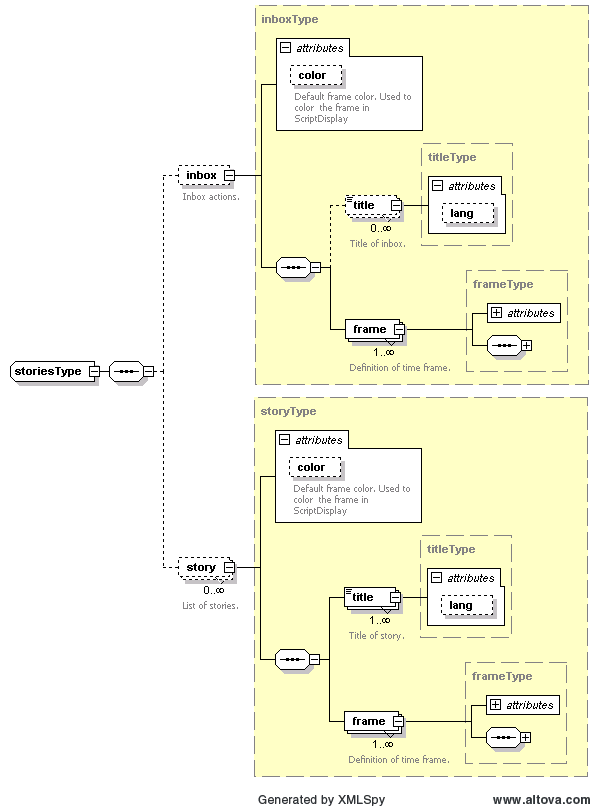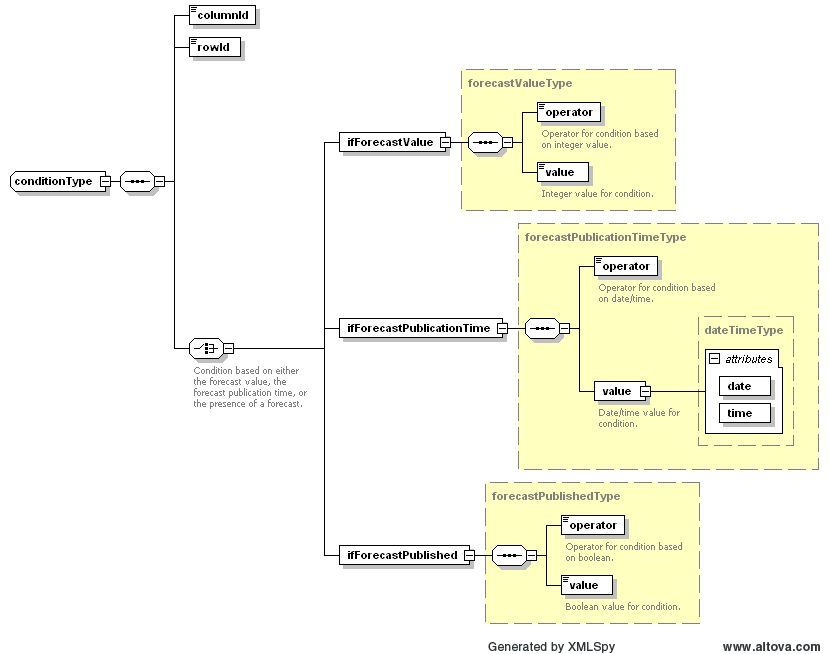...
The global structure of the XML-schema for the script configuration is as follows:
- The
Titlekey is an optional identifier for the script. - The start and end date/time for the script have to be specified using attributes
dateandtimein the formatYYYY-MM-DDandhh:mm:ss, respectively. - The
NextEventButtonkey can be set totrueorfalseand indicates whether or not a button for proceeding to the next event in the script must be included in the user interface. - The configuration of events (or stories) and the forecast table for a script are explained below.
Stories
In the section Stories of the script configuration, an arbitrary number of stories can be specified.
- Two types of stories can be specified:
...
Inboxis optional and may be specified only once.
- In the inbox storyline you define the messages that appear in the inbox, which can be
- selected by the user.
Storyis optional and can be specified an arbitrary number of times. Each story corresponds to a "Communication" button in the user interface that can be activated by the user. The content of story buttons can be dynamic, i.e. different events may be triggered by pushing the story button at different times.
- Each story must have a title by specifying the
Titlekey (but the title for the inbox is optional). This title will be used as the title of the story button. The title can be different for
...
<Story>
<Title lang="NL">Telefoongesprek</Title>
<Title lang="GE">Anruf</Title>
<Title>Telephone call</Title>
</Story>
- various languages. If the language attribute for
Titleis specified and it corresponds to the preferred language in the application configuration, then this title is used in the script. If no language attribute is found that corresponds to the preferred language, then the defaultTitlefor which no language attribute was specified will be used.Code Block xml xml <Story> <Title lang="NL">Telefoongesprek</Title> <Title lang="GE">Anruf</Title> <Title>Telephone call</Title> </Story>
Frames
A story may consist of an arbitrary number of frames according to the following schema:
The title of a frame in the inbox will be used in the list of actions that the user can invoke from the inbox drop-down menu. The title of a frame in a regular story will be used as the name of the button that the user can activate. As explained above, the title can be different for various languages.
...
A condition can be added to a story (or inbox) frame; the associated event will only be executed if this condition is fulfilled. For now, the only supported condition is one based on a forecast published by the user. A condition must be specified according to:
where
Typemust be equal to "Forecast",ColumnIdis a reference to a column in the forecast table (see below), usually a parameter,RowIdis a reference to a row in the forecast table (see below), usually a location,Operatoris one of "lt" (less than), "gt" (greater than), "le" (less than or equal to), or "ge" (greater than or equal to), andValueis the reference value to compare to.
An example in which a condition is used:
...
An event can be associated with a story frame by specifying the File key. Depending on the file type, a suitable application is started for displaying the file (e.g. a pdf-file is displayed in Adobe Reader and the contents of a txt-file is displayed in a message dialog window).
- The
File-key has an optional language attribute that behaves the same as for theTitlekeys.Forecast Table
The contents of the forecast table can be configured using the ForecastTable key. The schema for this section is as follows:
...



